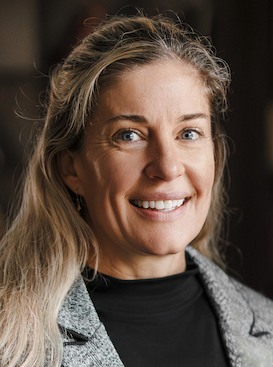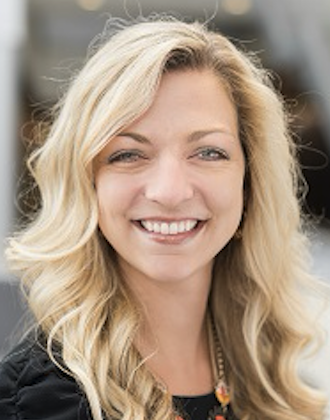Multiple Myeloma Bispecific Agents in Special Populations: A Case-Based Approach
Case 2: Sequencing Bispecifics and CAR-T in Multiple Myeloma
Kevin Brigle, PhD, ANP, Mary Steinbach, DNP, APRN, and Kelley L. Julian, PharmD, BCOP, discuss sequencing T-cell redirecting therapies in multiple myeloma. They review a case of a patient with aggressive refractory disease who was bridged to CAR T-cell therapy with talquetamab. This approach avoids prior BCMA exposure, which may improve CAR-T efficacy. They also cover managing adverse effects like cytopenias and washout periods.
Chair

Kevin Brigle, PhD, ANP
Massey Comprehensive Cancer Center, Virginia Commonwealth University
Faculty

Mary Steinbach, DNP, APRN
Huntsman Cancer Institute, University of Utah

Kelley L. Julian, PharmD, BCOP
Huntsman Cancer Institute, University of Utah
Transcript
Kelley Julian:
Hello everybody. Welcome to JADPRO's Roundtable discussion on Multiple Myeloma Bispecific Agents in Special Populations: A Case-Based Approach. My name is Kelley Julian, and I am a clinical pharmacist working at Huntsman Cancer Institute in Salt Lake City, Utah. I've been practicing in the myeloma space since 2018. I’m excited to moderate this session for you today on sequencing and I’m absolutely thrilled to be joined by Mary Steinbach and Kevin Brigle as we talk through this case together. So, I'll throw it over to Mary to give her quick intro.
Mary Steinbach:
Great, thank you Kelley. I have the privilege of working alongside Kelley at Huntsman Cancer Hospital in Utah helping her manage myeloma patients and I’m happy to be here.
Kelley Julian:
Great. And then Kevin, could you please provide us with your intro?
Kevin Brigle:
Sure. I'm clear across the country from both Mary and Kelley and I am a nurse practitioner in the hematologic malignancies clinic at the Massey Comprehensive Cancer Center at Virginia Commonwealth University, which is in Richmond, Virginia. And I am delighted to be back with you two again.
Kelley Julian:
Perfect, thank you so much. So I'll be moderating this session and I want to start with providing a brief background and overview. My case today, we're going to be looking at sequencing of bispecifics related to CAR-T in multiple myeloma patients. So in prepping for this, I wanted to kind of touch base about what's been out there in the literature regarding sequencing. This is definitely a hot topic for myeloma patients that everyone's trying to figure out. And I would say kind of the gold standard of what people are following is the review article published in Leukemia by the International Myeloma Working Group.
So essentially what happened is, from what I can gather from my reading, is that early in 2024 there was an immunotherapy committee created to provide recommendations on sequencing of immunotherapy in myeloma. And so what this group did and kind of recognized is that the field is changing and being revolutionized by the introduction of T-cell redirecting therapies or TCRT for short, you may see it referred to. And that's specifically our CAR T-cell products and our bispecific T-cell engagers antibodies. And so with the increasing number of these targets and mechanisms coupled with the differing levels of availability, not only at academic centers but also in the community within the United States and worldwide, there's been recognition that there's going to be many different permutations and sequencing of these TCRTs.
And so it's necessary to better evaluate the impact of what this looks like on not only tumor biology and immune microenvironment, but also just to provide general guidance on the optimal sequencing of these agents while considering impact for safety and efficacy of the future treatments. So a quick teaser is that sequencing, while it may seem like a hard concept, we start to have real-world evidence that is suggesting that BCMA CAR-T should come first. So briefly I just want to mention that we have real-world evidence for both ide-cel and cilta-cel and the impact of prior BCMA therapy before these CAR-Ts would be given to patients coming out of the U.S. CAR-T Consortium.
They looked at patients who had had prior BCMA therapies and it did negatively impact progression-free survival, whether that be Blenrep or a prior bispecific antibody. The median progression-free survival was decreased for both ide-cel and then of course for cilta-cel. CARTITUDE-2, specifically cohort C, they looked at this, again, very small numbers and hard to draw ready conclusions, but we can see here that there is kind of a negative signal for progression-free survival if the patients are treated prior to CAR-T with an anti-BCMA therapy. I also do just want to briefly mention that there are potential BCMA-directed immunotherapy resistance mechanisms that have been discussed when we're dealing with sequencing.
And the three main ones that you hear about are antigen loss, T-cell exhaustion, and a non-permissive microenvironment. So keeping those things in mind, I did want to touch on bridging therapy and again the International Myeloma Working Group has provided some really good definitions and visuals. So it would refer you to the Leukemia review article that was published in January of this year actually. But just as a brief review, so CAR-T as many of you may know or appreciate, there are many barriers that we encounter such as financial clearance, availability of manufacturing, and apheresis capacity at specific institutions. And so that leads to multiple weeks between the time of apheresis to the lymphodepletion chemotherapy that started a couple of days prior to CAR-T.
So the vein-to-vein time can be difficult in patients who are having aggressive disease and potentially a very aggressive relapse. And so we utilize what's called bridging therapy to bridge that gap. And it's pretty self-explanatory there. But initially when we started trying to figure out the sequencing questions, the role of bridging therapy was unclear. Some patients could maybe scoot by without it, but others really, really need it. And so what type of bridging therapies do we consider? We're going to talk about that.
And then I have this visual here from the IMWG guidance and they kind of talk about what holding therapy is, which is slightly different from bridging therapy. So you're pre-apheresis therapy, then apheresis occurs and your bridging therapy, there are some different considerations to be had there. And the question is what is preferred and what is best leading into CAR-T?
So with that, let me start with a patient case that is somewhere that's near and dear to Mary and I. This patient was a 58-year old woman with our ISS stage III triple-hit primary refractory IgG kappa multiple myeloma and she had a very aggressive disease and she progressed quite quickly through a lot of our upfront therapies.
So you can see she had a chemo debulking status post two cycles of K-DCEP with suboptimal response. And then we put her on E-KPd with no response, and then we realized okay, we need to get this patient to Carvykti quickly and we decided to bridge her with talquetamab. And so I have her problem list listed there. You can see she's got aggressive disease and I pulled this from a note that was the day of her leukapheresis. So she had had no response to E-KPd prior and then within 2 weeks we were leukapheresing her, trying to get her T-cells off, and then we were going to bridge to CAR-T with talquetamab and that was going to start the following day. You can see we've got ID prophylaxis, which is of concern. She still had good renal function at this time. So no dose adjustments upfront so far.
She was having severe cytopenias, which is partially why I chose this case and we'll talk about how we manage that. She already had anorexia at baseline, which is problematic when considering starting someone on talquetamab. And she was having hypoxia issues because she did have extramedullary disease. So with that, thank you for bearing with me for setting the stage. I'm going to start and throw a question over to Mary. First question regarding sequencing is what is the rationale for using a drug, a bispecific like talquetamab, as bridging over one of the other anti-BCMA bispecifics and what does the washout period look like in the real-world setting for a patient like this?
Mary Steinbach::
Yes, thank you. And this case is a challenging one, right? I think whenever a patient has rapidly progressing disease or disease that is refractory to our most traditional and best myeloma drugs, the IMiDs and proteasome inhibitors, it can be tough to get the timing right of everything. The use of talquetamab here was chosen just to avoid a BCMA exposure prior to BCMA CAR-T. So, we do know and have known for some time that patients who have not had prior BCMA, and you showed us this with that early data, they tend to have better responses to BCMA CAR-T. And this makes sense if you think about it, same target. And so with wanting the CAR-T to have its best chance, we opted for talquetamab, which is a GPRC5D bispecific antibody, so an entirely different target.
And actually, it can be quite beautiful to use talquetamab as bridging therapy in patients who are at fourth line because you don't need it for very long. And so a lot of times these adverse events that we see with talquetamab, patients who are using it for bridging really only need probably ramp-up and a couple of other doses, especially with how quickly CAR T-cells are being manufactured these days. So it's kind of a great short-term, totally different target, manageable side effects. So it's a good bridging therapy in that sense.
The washout period, so ideally patients are washed out prior to leukapheresis, number one, to have the most optimal collection of healthy, happy T-cells. And so in a perfect world, that looks like 2 or 3 weeks off of whatever treatment the patient has been on. In her case, we were collecting right off of a chemotherapy cycle, so really not the best setting in terms of T-cell functionality, but it is what it is and you have to be able to get these things done as you can. And so that collection occurred at the end of what that traditional chemo cycle would be. So technically, she was more than 3 weeks from those alkylating agents.
Then the washout before the lymphodepleting chemo, there's in all the prescribing inserts of both of our CAR-T products, it does direct you what to do. It's not always possible though to have that length of time. And we know now from real-world data that the washout prior is really just about kind of optimizing again the patient's immune system, space in the patient's immune system for these CAR-Ts. In this case, we did do about a 2-week washout period of talquetamab prior to lymphodepleting chemo. But again, there are other aggressive cases where we just shorten that washout period pre-LD chemo and you may be still dealing with some adverse events or cytopenias from the previous therapy, but that is what it is.
Kelley Julian:
Perfect. You hit all the high points. I knew you would. So thank you for that. This patient, we got her successfully to CAR-T. We ended up actually having to put her on talquetamab post as well. And so it worked really, really well for her in this instance. And I did just one thing to add is that we work at a large academic medical center and we have a lot of resources to throw at patients like this. But had this patient been out in the community, for example, it's not necessarily wrong if they have the capability to do an anti-BCMA bispecific and that's what they can do with reasonable treatment and support than there is data that shows responses when the patient could get to CAR-T later. So it is different based on where the patient's being treated and what their capabilities are.
Kevin Brigle:
Could I add to that?
Kelley Julian:
Yes.
Kevin Brigle:
I think one of the other important aspects about that is to collect your T-cells prior to restarting the any bispecific as well. So that's one other recommendations in terms of bridging.
Kelley Julian:
Yes, thank you for mentioning that. That's extremely important to get. Like Mary said, the healthy T-cell, the viable T-cells to be able to treat it and get ready for CAR. So Kevin, now that I've got you on the line here, I'm going to ask you my second question, which is how do you manage specific adverse effects for bridging bispecifics, specifically looking at cytopenias and as they're heading into CAR-T administration, how do you kind of optimally tee them up, keeping in mind that you're considering a washout and that you don't want them to be completely deconditioned when you bring them to lymphodepletion chemo?
Kevin Brigle:
That's one of the joys of the bispecifics is because you see a little bit less of that and if you would use traditional chemo, let's say like a DCEP or VDPACE, something like that. So, these patients go into the CAR-T a little bit better with the talquetamab bridging. And so I think our management's very similar to what it is anytime you get a bispecific in as well. And so those patients, either they're already on or they're probably going to be starting, as they go into CAR-T, IVIG. And so we make sure to check the IgG level and initiate IVIG if necessary.
Patients who are all on various antibiotics as well, so we treat them just like a de novo, let's say, a patient we were going to treat on one of the bispecifics as well. So acyclovir, the Bactrim, and those things that they might need as well. We're not adverse to using a G-CSF either for those patients, the whole goal is to keep them healthy. If they get sick, we're not going to get them to the CAR-T as quickly. And so the CAR-T is going to be the heavy lifter here.
Kelley Julian:
Perfect. Thank you so much Kevin. So let's kind of wrap up this case in a nice little bow. Final recommendations are there are safe pretreatment agents prior to the leukapheresis, the apheresis that needs to occur for CAR-T, and ideally a 2-week washout there is important. You need to avoid certain agents like high-dose alkylators that may impair future CAR-T or T-cell engager efficiency when you're thinking of these therapies. Bridging therapy is recommended for patients with high disease burden and we hope that transitions into a better disease control and reduced side effects with the CAR-T post-infusion. The sequencing preference really depends on the capabilities and the resources of where the patient's being treated and we must optimize supportive care throughout.
So thank you so much Mary and Kevin for sharing your thoughts. This brings us to the end of our discussion. I would like to thank you both for taking time out of your busy day to be here for this talk. For more information and other discussions on multiple myeloma, please visit JADPRO online at jadpro.com. Thank you so much and have a great day.

